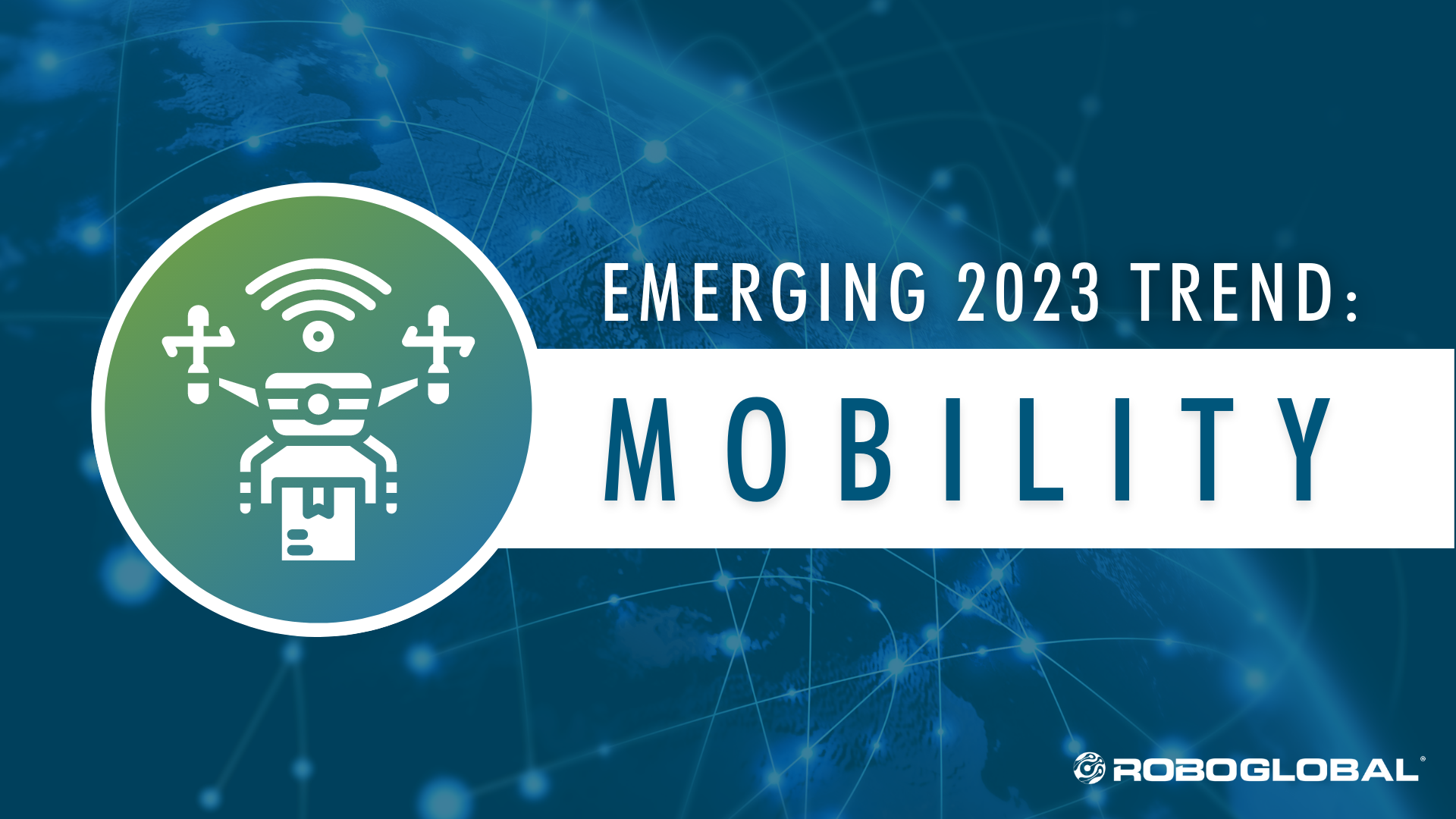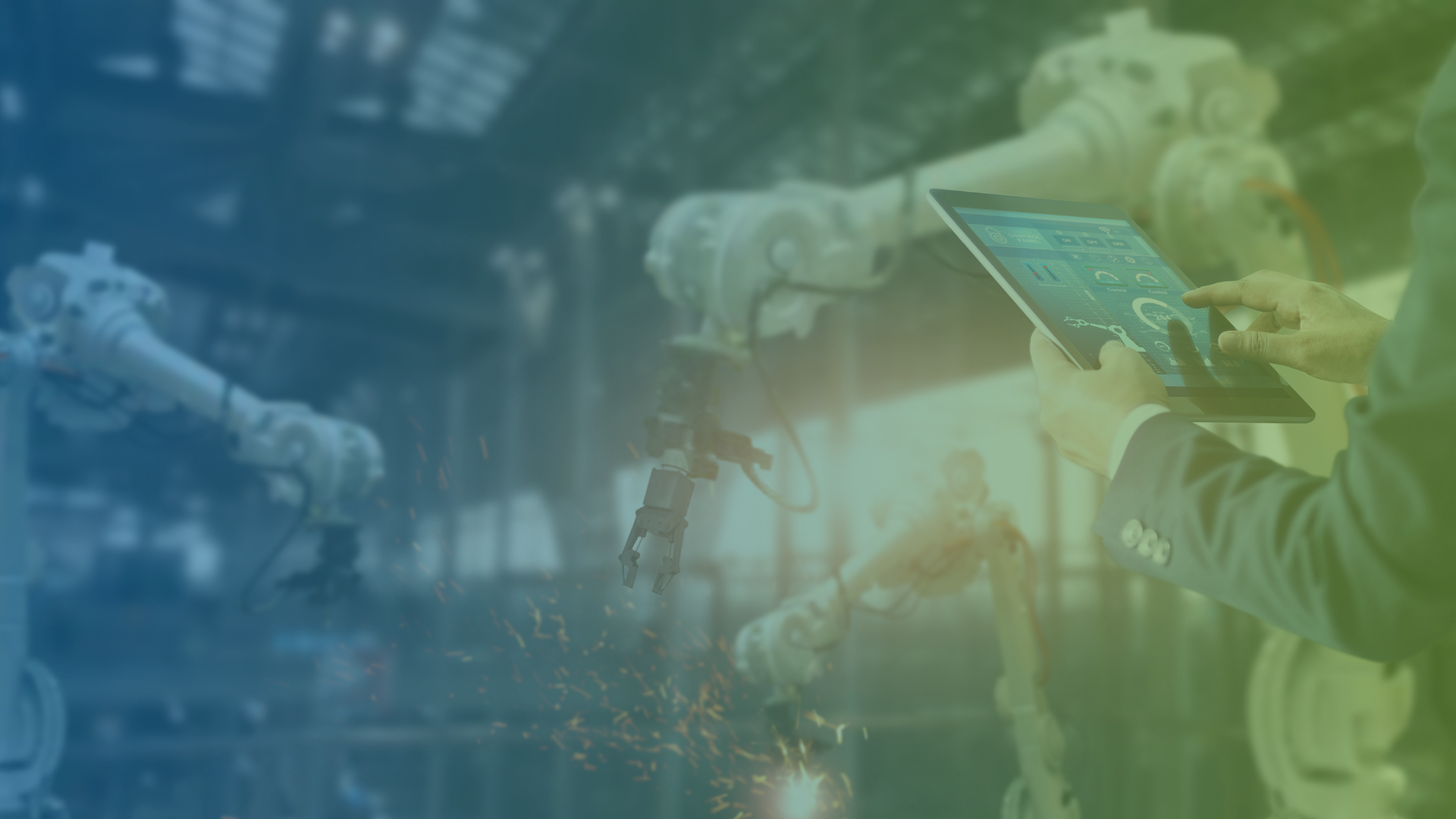A Q&A with Richard Lightbound, CEO EMEA & Asia at ROBO Global
What is the long-term investment case for robotics & automation?
Robotics and automation is one of the most significant and important investment opportunities available to investors. This a multi-decade set of technological developments that influence every aspect of how we, and future generations, will live and work. We believe we are in the early stages of the robotics and automation revolution, with a huge growth opportunity still ahead. This is being driven by:
- Improving technology. We continue to see rapid advances and declining cost curves in everything from machine vision to voice recognition and machine learning. These technologies are enablers that increase the scope of where robotics and automation can be deployed. Ongoing advances also create opportunities as previous generations of robots and technology have to be upgraded.
- Wider deployment. Robotics and automation have applications far beyond manufacturing. They are bringing greater efficiency to uses including automated distribution centres, surgical robots and diagnostics tools, drones, and autonomous vehicles.
- Many macro and social challenges. These include aging populations and a shortage of skilled care workers, the need for greater crop productivity to feed a growing population, healthcare systems already at full capacity but not yet reaching the entire population, low productivity, and more recently automation that assists with social distancing.
The challenge for investors is how best to invest in the theme, as this is a highly unstructured universe of companies with rapid technological advances suddenly changing the landscape across the many areas of society where we see robotics and automation deployed.
How has the COVID-19 pandemic and economic downturn affected the investment theme?
We believe it has validated and accelerated the investment case for robotics and automation:
- Technology has been essential to social distancing, from logistics to remote healthcare.
- Robotics and automation create safer and more efficient workplaces from factories to hospitals to offices, which has been crucial to companies during a downturn.
- The index also has very little exposure to the sectors worst affected by the crisis – energy, travel, hospitality, and traditional retail.
What changes have been made to the ROBO index due to COVID-19?
The short answer is none. The ROBO index currently has 87 members and employs a modified equal-weighting system. Each quarter we reset company weights and make any member additions or deletions. All of the 12 subsectors and the underlying index members have been identified as enabling and benefitting from long-term and large-scale technology developments within the world of robotics and automation.
We assess and review our subsectors and index members based on on-going research, management engagement, guidance from industry experts, and a series of in-house filters we apply.
We are not trying to take concentrated bets with this strategy or time market events, as there is too much technology innovation and disruption in motion. We believe all our sub-sectors will contribute to the growth and returns of the strategy over time. In fact, we believe that trying to identify and play this theme on a short-term perspective is highly challenging and not recommended. We feel investors are better served by taking a long-term view of the robotics and automation opportunity and investing broadly across it.
We believe combining the best of active research through industry experts and the quantitative benefits of index investing is not only unique, but also essential when investing into disruptive technology such as robotics and automation.
How do you translate this theme into a portfolio?
When we first identified the robotics and automation investment opportunity over six years ago, there was no index or benchmark industry classification system for identifying the relevant companies. To fill that gap, we worked closely with our industry experts on our strategic advisory board to create the ROBO Global Industry Classification.
Choosing from our database of publicly traded global companies that have a high revenue association with robotics, automation and enabling technologies, we select only those that fit within one of the 12 application and technology sub-sectors and have a minimum threshold of revenue related to robotics, automation, and artificial intelligence.
Within their specific sub-sector, companies must be in a position of product and technology leadership and be able to demonstrate a focus on growth in robotics and automation. Lastly, companies that do not pass the ROBO Global ESG Policy are excluded.
This process results in a research-driven, diversified index of best-of-breed companies that are driving the robotics and automation revolution, with very little overlap with other tech-focused funds and ETFs.
In fact, typically less than 3% of the ROBO index overlaps with traditional market indices such as the S&P 500 and the MSCI World Equity indices.
How can an index strategy draw on active research?
As I mentioned, robotics and automation is not a defined and structured investment opportunity. ROBO Global has combined active research with industry experts to identify the relevant subsectors and then best-in-class companies simply because nobody else has done this to date.
Because robotics and automation cut across traditional industry classifications, we believe active research is essential in identifying the companies most involved in the theme. And because the theme targets rapidly growing areas of the economy, active research is vital in ensuring the index is able to evolve with the theme. A static index based solely on backwards-looking data and historical business models, in contrast, may not capture the changing dynamics of the markets involved.
Combining this active research with a transparent and rules-based systematic strategy implemented through an index of liquid securities helps to ensure that exposure to the theme is not subject to behavioral biases or unintended risks.
What differentiates this strategy from competitors?
Since ROBO Global launched the first robotics and automation index portfolio in 2013, a wide number of new competing funds and ETFs have launched. What is interesting is how different these strategies are in terms of member overlap. With 87 members in the ROBO Global index, we typically see a member overlap by weight with competing strategies of between 10% and 30%.
The majority of competing strategies are either very tech oriented and/or quant driven in their security selection, which makes them dependent on backwards-looking data from non-specialist index providers.
ROBO Global is the only company that combines active research with industry experts to take a forward-looking view of the opportunity. Our index gives investors pure-play exposure to best-in-class robotics and automation companies as well as enabling technologies.
RELATED: ROBO GLOBAL STRATEGIC ADVISORY BOARD INSIGHTS
We don’t believe other providers understand how complex the robotics and automation market actually is. As a result, attempts to include robotics and automation in their offerings often miss the mark. This complexity lies in the depth and breadth of the robotics and automation value chain, as well as its extremely rapid pace of development and growth. ROBO Global tackles both. The index is designed specifically to include companies across the entire global supply chain in 12 targeted sub-sectors. That means that instead of limiting the scope to companies who produce, for instance, robotic arms used for surgery, ROBO includes the companies that provide the components and technologies that are used to build the arms themselves.
We’ve entered an inflection point with robotics and AI and the rate of change is extraordinary. It’s impossible to predict which companies will excel over the long term and which will fall prey to the increasing competition. By investing in the building blocks of innovation, we believe ROBO offers investors greater potential for long-term growth in a way that diversifies the risk of predicting which players will rise to the top.
What differentiates this strategy from broader technology funds?
Most tech funds are dominated by mega-cap US tech names; our strategy tends to be classified instead as a global small and mid-cap strategy.
The index spans a range of end markets beyond technology. These include manufacturing, food and agriculture, and healthcare. Its constituents’ business models are also broader than just technology: they range from capital-equipment manufacturers like robot makers to software and service providers.
Where the index does invest in technology companies, it is focused on those that are enabling autonomous systems – for example, providing sensing tools and computer vision, AI software, and the semiconductors underpinning the rollout of 5G.
All this is demonstrated by the index’s high active share relative to indices like the S&P 500 and MSCI World. In other words, most investors don’t own these stocks elsewhere in their portfolios, whereas large-cap tech stocks may already feature prominently in their core equity building blocks.
What types of exposure are in the index outside the technology sector?
Healthcare: the index includes companies developing life-science tools to automate the research process for new drugs and diagnostics.
RELATED: INVESTING IN THE HEALTHCARE TECHNOLOGY REVOLUTION
Food and agriculture: the index includes providers of automation equipment for bottling and for processing protein, manufacturers of automated and even autonomous precision agricultural tools, and companies developing sensor technology that can monitor plants and crops for hydration and contamination.
Consumer: the index includes manufacturers of devices such as robotic vacuum cleaners.
How pure is the exposure to the theme?
We believe the ROBO Global index has the highest revenue purity to the robotics and automation investment theme in the market. Approximately one-third of the portfolio contains companies with 90% plus revenue purity. The remaining two-thirds are companies with a minimum of 30% revenue purity but – more importantly – that portion of the companies’ revenue is high margin and growing; we expect the revenue purity in these companies to increase over time.
The blended revenue purity across both sleeves of the index has tended to be 55-60%.
Do you apply any environmental, social, or governance (ESG) criteria?
ROBO Global is committed to maintaining and improving a research and investment approach that incorporates ESG aspects. The ROBO index follows a strict ESG policy, which is focused on risks around serious human rights violations, severe environmental damage, and other particularly serious violations of fundamental ethical norms, including the production of controversial weapons.
We have removed companies from the index for breaching these requirements.
The nature of the investment mandate also implicitly tilts the index towards companies that score relatively highly on ESG grounds – there is far greater exposure to healthcare than energy, for example, and the types of technology company held have tended not to be those associated with issues around data privacy.
Learn more about investing in robotics and automation through the ROBO Global Robotics & Automation Index.





